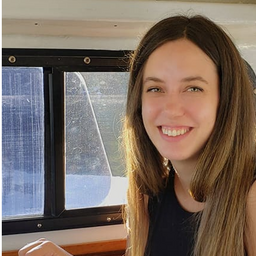martes 7 noviembre, 2023
Is change the new normal? Every year seems to be the next warmest year. Those of us looking back at our planet from space are seeing these changes across our planet in near real-time through the eyes of satellites. But behind those pixels are real human stories of catastrophe and suffering. So, with all our constellations of satellites, massive computing power and new generative AI algorithms, can we do anything more than simply report what happened? What does the future hold for geospatial t...
At the Earth Observation for the Environment Laboratory in The University of Calgary, we have been conducting research in developing remote sensing-based forecasting system for forest fire danger conditions since 2009. In the scope of this presentation, the chronology of such developments at daily, 4-day, and 8-day time scales will be discussed. We believe that these would be critical for managing forest fire regimes in Canada and elsewhere in the world.
Addressing the escalating levels of methane in the Earth's atmosphere is among the most urgent issues humanity faces. Methane ranks as one of the most potent greenhouse gases (GHGs), trapping over 25 times more heat than carbon dioxide over a 100-year period; thus, significantly reducing methane emissions will make a substantial impact in the fight against climate change.One of the most impactful methods for mitigating methane emissions involves the prompt detection and repair of metha...
Canada has just experienced a record wildfire season with devastating impacts. Public safety and damage mitigation is a priority for all impacted by these disasters. From mapping vegetation, analyzing slope stability, planning fire breaks, qualitfiying wood debris and fuel loads, how does LiDAR play a role in meeting post wildfire needs?
The Schulich School of Engineering is a leader in engineering education and research innovation. We draw on our combined strengths in teaching and research to offer students rich and diverse learning experiences and create a dynamic research environment that encourages high-caliber research by world-class scholars. Located in Calgary, the energy and engineering capital of Canada, the Schulich School of Engineering has close ties to the community and key industry partnerships that ...
This talk focused on those seeking work in GIS, cartography, remote sensing, programming, and other related geospatial fields.Jonathan Murphy, Managing Director of GoGeomatics Canada and geospatial career coach, will be sharing his valued tips and insight for your job search. He is an expert geomatics professional with close to 20 years of experience. Jon’s career has ranged from the oil fields of Alberta to projects w...
Our goal at TULLOCH is to build a people-first culture while providing integrated planning, surveying, environmental and engineering solutions delivered by fulfilled and motivated experts. We pride ourselves in offering meaningful jobs with solid career trajectories for all our employees. We want to build an organization where everyone loves their job and their leaders care for them. This remains our guiding principle and is the foundation of everything we do.TULLOCH is always eager to...
Explore the high school requirements to enter a nationally and internationally accredited program in surveying and geospatial technology. Learn about the courses, timeline and costs of a two-year diploma and transfer to a degree. An overview of college student supports will be presented. Become familiar with the technology used in the program and industry. Hear about the career options and industry demand for graduates.
The SAIT Connector is an active learning space for all apprentices and students at SAIT. It acts as a drop-in space and learning hub where students and faculty from any SAIT program can learn to apply high-tech equipment like drones, XR, 3D scanners, high-grade sensors, cameras and any other specialized equipment you may be interested in to solve problems and challenges. Thanks to industry partners, our collection of aerial and terrestrial data capture hardware along with advanced software pl...
Discover who Challenger is and the technology we use, while exploring employment opportunities.
Department of Earth and Environmental SciencesEnvironmental ScienceEnvironmental Science integrates our understanding of chemical, physical and biological processes to study natural and anthropogenic influenced environments, and provides solutions...
miércoles 8 noviembre, 2023
Founded in 1979 to support the mapping and land surveying needs in Western Canada, the Department of Geomatics Engineering (former Department of Surveying Engineering) at the University of Calgary has been a renowned international leader for innovation in education and research over four decades of rapid technological advancements. The department has kept pace with its outstanding achievements during a multi-stage transformation of the geomatics industry that disrupted and shifted the focus f...
Surveying has changed significantly in the last decade with the amount of new technology available to us. With the speed at which that technology is evolving and improving, the next decade will see an even greater onus on technological solutions that increase accuracy, limit risks in the field, and greatly improve efficiency. As a surveyor you will also be a technical specialist who understands how to utilize new equipment, technology, systems and software in the execution of your work.
No matter what your GIS super-powers may be, there is a place for you at GeoBC. We offer clients a wide range of GIS services and products such as base mapping, imagery analysis, data science, data management, spatial analysis, programming/automation, project management, map making, web maps, and mobile app creation.On any given project your clients may be biologists, engineers, planners, First Nations relations staff, land and water authorizations staff, executives, Emerg...
Geodesy and geomatics engineers map the ocean floor, create 3D models and develop and test navigation systems to better understand the Earth. Our program features hands-on learning opportunities in geomatics and surveying.Learn more
The Centre of Geographic Sciences (COGS), one of two locations that make up our Annapolis Valley Campus, is Canada's largest geomatics-focused learning environment. COGS programs prepare you to start or continue your career in the global geomatics sector.At COGS, you'll meet students from around the world learning about surveying and mapping land and the ocean floor.
The Geomatics Engineering Technology program will provide you with extensive practical skills combined with a broad theoretical background to acquire tools and techniques used in land surveying, remote sensing, cartography, geographic information systems (GIS), global navigation satellite systems (GPS), photogrammetry, geography, and digital mapping.To succeed in the program, you will need to be comfortable with mathematics and enjoy working with computers and instrumentation. In addit...






























